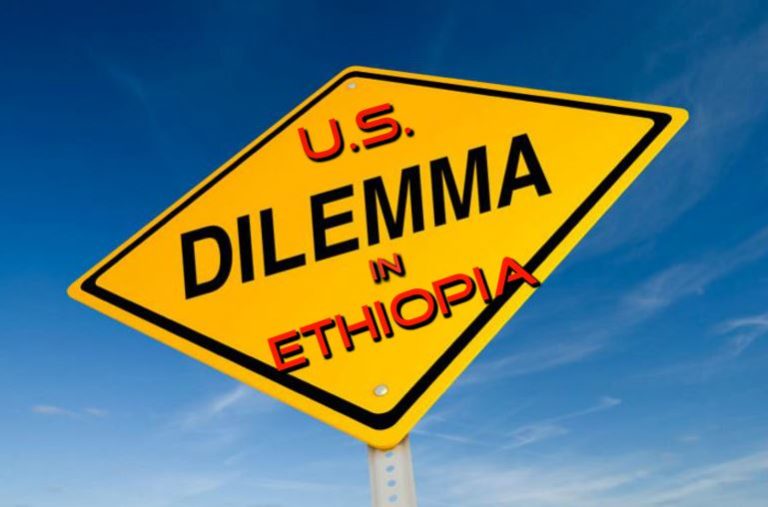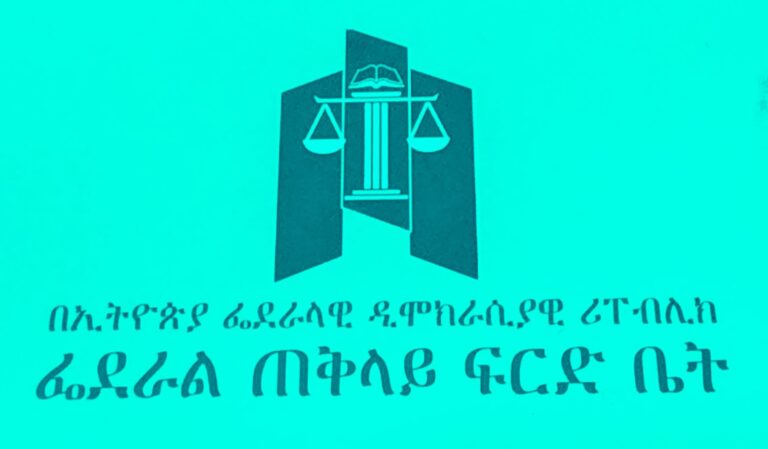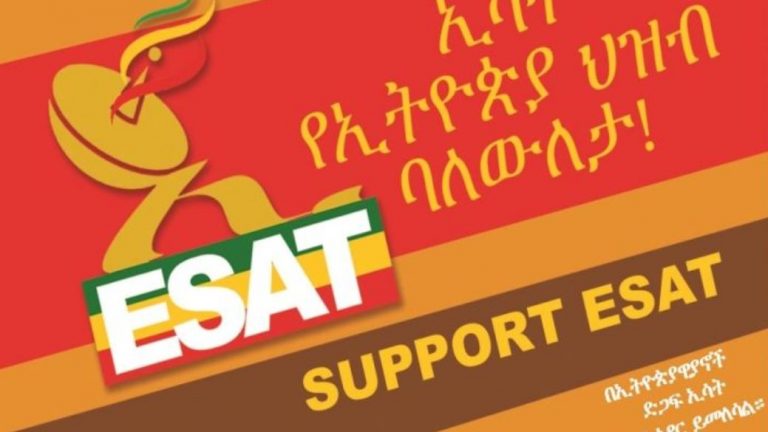Unity Park Addis Ababa: The Story of All of Us in the City Upon the Hill
Those who can, will help us. Those who cannot, should leave us alone. Those who do not understand what we do will criticize us. Those who do not like what we do will oppose us. — H.E. Prime Minister Dr. Abiy Ahmed
 The Story of All of Us: Ode to Unity Park in Addis Ababa
The Story of All of Us: Ode to Unity Park in Addis Ababa
On a partly cloudy January morning
I took a walk in the (Unity) park
There I found His(Her)story with a puzzled look
Asking me curiously,
“Do you know?”
On these grounds of power and glory
In this place of honor and shame
Where hope and despair tangled to the bitter end
Is written the Story of All of Us.
“Do you know?”
In this place of sadness and joy
On these grounds where victory was conceived and defeat born
Where horror, terror and torture were hid in a dungeon
Is written the Story of All of Us.
“Do you know?”
On these grounds of promises made and promises broken
In this place of truth and deceit
Inscribed on the ancient granite walls
Is the Story of All of Us.
“Do you know?”
On these grounds of virtue and vice
In this place of darkness and light
Where quest turned into conquest
Is written the Story of All of Us.
“Do you know?”
On these grounds where trees stand tall
In this place where they stood silent sentry for a century
New flowers today sing in dazzling colors
And write the Story of All of Us.
Do you know?
On these grounds where our leaders prayed and sinned
In this place where they plotted and schemed
Did they forge one nation indivisible
Is written the Story of All of Us.
“Do you know?”
On these grounds where we founded our nation’s capital
In this place where our ancestors came together in wisdom and folly
To do dastardly deeds and recite sublime poetry
Is written the Story of All of Us in blood, sweat, tears and laughter.
Answered I to His(Her)story:
Now is the time to turn a page
To inscribe a new chapter filled with hope and optimism
To affirm in this hallowed park the sanctity of our unity
To boldly declare our humanity in our diversity.
Answered I to His(Her)story:
Now is the time to write the new Story of All of Us
To sing out loud our songs of peace, prosperity and unity
Rebuild our City Upon a Hill amidst a bed of new flowers
Then let our “sons and your daughters prophesy, our young men see visions, and our old men dream dreams”
Answered I to His(Her)story:
Somewhere ages and ages from now
A generation will walk in Unity Park and sigh in relief and pride:
“Thank God, our ancestors seized the moment
On two roads that diverged in the night
They took the road marked ‘Peace and Prosperity’
Made a right turn on a road named “Reconciliation and Forgiveness”
And that has made all the difference in the Story of All of Us!”
— Ode to Unity Park in Addis Ababa, written following my visit on January 28, 2020
What Unity Park means to me
When I was a child, I was taught to be proud and develop a sense of Ethiopian exceptionalism. After all, Ethiopia is a special place on earth and in the eyes of Heaven, Ethiopia is a scared land where the Ark of the Covenant rests and the Prophet Muhammad sent his first followers (the Sahabah) to flee persecution and seek refuge in the Christian Kingdom of Aksum. Ethiopia is the land of the free never colonized and victorious over those who dared to try. I was taught Ethiopia shall never falter because it is written, “Ethiopia shall soon stretch out her hands unto God.”
In the tourist brochures, Ethiopia was described as “The Land of 13 Months of Sunshine”.
Today, Ethiopia is described as the “Land of Origins”. Berit Reiss-Andersen, Chair of the Norwegian Nobel Committee introducing Prime Minister Abiy Ahmed at the 2019 Nobel Peace Prize ceremony affirmed, “Ethiopia is the cradle of humankind, the first homo sapiens emigrated from the territory in your country. In this sense, we are all Ethiopians.”
I concur wholeheartedly.
But for most of my adult life, the word “Ethiopia” was synonymous with poverty, famine and misery.
Ethiopia, they said was the epicenter of “one of the worst humanitarian events of the 20th century.”
In the first two decades of the 21st century, Ethiopia was known for massive human rights violations. Until recently, Ethiopia had the dubious distinction of being labelled the “second worst jailor of journalists”.
But in the last 21 months, extraordinary transformations have taken place not only in the Ethiopian political landscape but also the entire Horn region.
Ethiopia’s global image has changed from warmaker to peacemaker. Ethiopia today has a leader lionized as a “champion of peace.”
Ethiopia today is the brightest star in the African constellation. Ethiopia is the New Spirit of Africa not only in the air but also on land.
Unity Park is just the first step in Ethiopia’s rise to a glorious brave new future of peace, unity, opportunity and prosperity.
Unity Park, which broke ground in January 2018, is the brainchild of PM Abiy Ahmed.
The park is part of PM Abiy’s “Home-Grown Economic Reform” agenda, which features tourism as a central component of Ethiopia’s economic development.
Unity Park is also part of the beautification of Addis Ababa (Sheger Project) covering some 56 kilometers of river cleanup and rehabilitation work supported by a grant from the Government of China.
For me, Unity Park and the larger Sheger Project are essential to the revitalization of Addis Ababa and the general well-being of its people.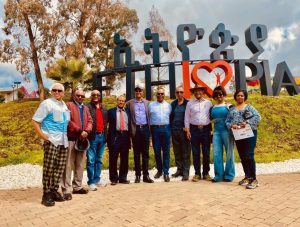
I have witnessed with great sadness and heartbreak the indignity of the people of Addis Ababa continue to suffer because they have NO public green spaces for rest and relaxation.
The narrow strip of green spaces on Menelik II road south of the Grand Palace and east of the Jubilee Place where I used to play and ride bicycles over five decades ago with my friends have been fenced off for years, presumably for “development” purposes.
I can never understand the evil mind that denies citizens the right to enjoy a sliver of God’s good green earth!

Perhaps the most shocking and heartbreaking moment for me was the time I witnessed several bridal parties taking pictures on the sidewalk outside the walls of the Sheraton Hotel shortly after I left Unity Park. How ironic! I could not fathom that sidewalk is the only “green space” in the whole city for young brides and grooms to take their bridal pictures. What a heartless crime against young newly-weds.
Unity Park to me is “Medemer” in motion, an idea based on the principle that the whole is greater than the sum of the individual parts. Addis Ababa (New Flower) was built by the blood, sweat, tears and laughter of Ethiopians of all ethnicities, religions, languages, traditions and customs. Today, Addis is a cosmopolitan city and a center of international diplomacy and home of the African Union.
Unity Park to me is the ultimate symbol and a living monument to one of my core beliefs, “Ethiopians united can never be defeated.” If Ethiopians work together in common purpose, in good will and good faith, they will be victorious against their age-old enemies — poverty, hate and ignorance.
Unity is written in the DNA of Ethiopia.
Unity saved Ethiopia from the jaws of European imperial aggressor.
When Africans cast off the yoke of colonialism, they made Ethiopia the original home of the former Organization of African Unity and the African Union today.
Today Ethiopia stands united despite the best efforts of those who have tried to carve it up into kilil-istans and ethnic homelands.
Ultimately, Unity Park to me is the Story of All of Us. Not just our past history but the history we shall be writing together as we march forward and looking back only to see how far we have come.
Unity Park to me is a symbol of a rising Ethiopia. An Ethiopia rising above poverty and the politics of ethnicity; an Ethiopia embracing a new humanity powered by limitless opportunity and prosperity.
From a torture chamber to a tourist site
Unity Park is built on some 40 hectares on the grounds of the old Grand Imperial Palace (Gebi) which served as a seat of power in Ethiopia for over 130 years. The Palace sits on a hilltop overlooking the city with tall eucalyptus trees stand sentry on its outer perimeter. The Park is built with funding from the government of the United Arab Emirates and contributions from well-heeled Ethiopians and cost of more than USD 160 million. No tax dollars are used in the project.
When I was growing up, the Palace was a place of mystery and dread, a forbidden city no one could enter or leave without the permission of the old emperors or their modern-day equivalents. I remember walking the outer perimeter of the Palace as a kid with my friends heading towards Arat Kilo always fearful of the mysterious goings on behind the iron wrought gates. I remember the honor guards standing at attention and occasionally scowling at passers-by who misbehaved.
As I think back now, the Grand Palace reminds me of China’s Forbidden City, presently a museum, consisting of a palace complex in Beijing. Like China’s Forbidden City, the Grand Palace has a complex of buildings which served as living quarters to Ethiopian emperors and their households, provided office space to more recent leaders and also functioned as the ceremonial and political center of Ethiopia’s government.

Until recently, the Palace was a place of intrigue, conspiracies and horrors. It was a place where war and peace plans were drawn, public policies and plans drafted, ideologies argued and fashioned, death warrants signed and even shootouts held Dodge City-style among contending factions. The Palace also had a chamber of horrors where a self-styled gang of military thugs known as “Derg” conducted torture on political opponents and “enemies of the state”.
Watching history in motion in the park
For me, the visit to Unity Park was a whole day affair taking close to 6 hours. One can certainly rush through it in half that time but why? Enjoy the day at the park!
Unity Park is history in motion. I felt like I was walking with history brought back to life. I could feel the presence of those who made history and sense the ghosts of those upon whom history was made. I found myself walking in living history, history changing before my eyes in the renovation of old structures and reclaimed fallow land. Last year, I had seen the virtually dilapidated Palace and neglected grounds. It broke my heart then and today my heart is warmed seeing the place come back to life and radiant.
U.S. Ambassador Michael Raynor correctly described Unity Park as “quite spectacular.”
Uganda’s President Yoweri Museveni was spot on when he said, Unity Park “brings out the history of Ethiopia.”
I wholeheartedly agree.
Unity Park has several different areas (exhibits) to visit. Entering the grounds from the ticket office, one is greeted by a well-manicured green area with a children’s playground to the side. Wending along the pathway, there is a beautifully arranged botanical garden of some 46 indigenous Ethiopian plants and herbs. The mixed bouquet from the garden wafts in the air to greet you. To the east, there is a cave made from molded concrete extending for over 170 meters. One can see one black-maned Ethiopian lion and 2 lionesses in the cave through a plate glass in well-kept enclosure protected by redundant safety measures. There is an exhibit of Ethiopian foxes nearby. There is a full-size zoo on the west side of the park that is expected to house over 300 animals when it opens. The Park has full modern veterinary and food preparation facilities.
There is an area on the west side of the park where futuristic regional pavilions are set symbolizing the nine regions through cultural artifacts.
Unity Park offered me a variety of experiences.
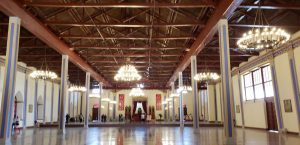
I enjoy historic preservation and environmental conservation, things I have enjoyed doing in the U.S. over the years. I marveled at the restoration done to the Gibir Adarash, the large banquet hall that can accommodate several thousand guests. The leather ties securing the ceiling have been in place for well over one hundred years. Time has done nothing to diminish the beauty of the Gibir Adarash.
As walked through the various buildings in the Palace Complex, I paused to imagine.
Standing in Emperor Menelik II private prayer room, I wondered what he prayed for? Help to unite Ethiopia? Beat back the Italian colonial aggressor?
Standing on the watchtower, I imagined a marching army heading towards the Palace and what defenses could be deployed from the commanding heights of the Palace grounds.
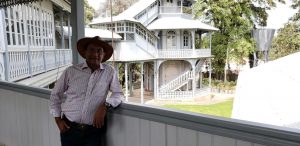
Standing in Emperor Menelik II’s office, I wondered how he interacted with his official guests and ministers. He was known as a great listener and patient man (Emeye Menelik Aba Dagnew) but brooked no nonsense.
Standing in the great Fitawrari Habte-Giorgis Dinegede’s office, the commander-in-chief of the Ethiopian army in 1896 at the Battle of Adwa and Menelik II’s war minister and most trusted advisor, I wondered how the two sat together and drew up battle plans and peace strategies.
Standing outside Queen Taitu Bitul’s bedroom, I wondered how she ran the huge palace household. I pretended to hear her play the begena (an indigenous 10-string instrument), watch her playing chess and listening to her reading poetry. She was known for her artistic inclinations.
Standing the closet size “telephone room”, I wondered how Menelik II kept tabs on his governors throughout out the provinces. I heard the story that some governors would change their residences and relocate to avoid the Emperor keeping tabs on them by calling them on the phone. (They did not want to be tethered to the phone.)
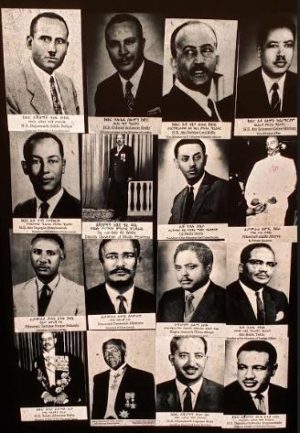
Standing in the Throne House, I imagined Emperor Haile Selassie listening to oral arguments in legal cases and rendering a final decision. I wondered how horrific it must have been for the emperor to be murdered and buried under the office of Mengistu Hailemariam, the bloodthirsty leader of the military Derg. Yes, I imagined how Mengistu sat in his office and signed up death warrants for so many innocent victims.
I imagined Meles Zenawi scheming to maintain his hold on power and devising and refining his divide and rule strategy. I tried to imagine Meles sitting in his office brooding over his next steps against his opponents.
I imagined Hailemariam Desalegn in the Throne House a virtual prisoner of the TPLF. I wondered when he decided “Enough is enough” and bailed out leaving the TPLF holding the empty power bag.
Unity Park is a labor of love
Walking through Unity Park, one sees hundreds of young men and women artisans and laborers working on different projects carving out stones, planting flowers, sculpting felled trees, building structures and so on. There is much to be done. It is worthwhile to pause and watch the young workmen and women doing their craft. There is ample space for period artifacts and relics. The Park management will accept donations of historical items for exhibition.
It is expected up to 1,500 people will visit the park daily. Cost of admission is 200 Br for a regular visit and 1,000 Birr for VIP tickets. Non-national regular and VIP visitors will pay USD 20 and 50, respectively. Admissions revenue will be used exclusively for Park administration, improvements and maintenance.
Ethiopia’s Golden Age
Ancient Greece, modern Europe and America all had their golden ages. They had their time of peace, prosperity, and happiness.
Ethiopia’s Golden Age is upon us.
I might even be tempted to say we are beginning to experience our Age of Aquarius, when we as one Ethiopian nation will take control of our destiny with an expanded consciousness in which we embrace our humanity in our diversity and attain new enlightenment through the revelation of the truth “Love conquers all.”
IT IS OUR TIME NOW TO REVEL IN THE (UNITY) PARK!



